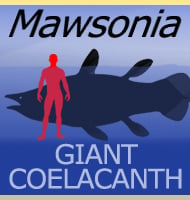Xeradipterus
In Depth Xeradipterus is a genus of lungfish known to have lived in Australia during the Devonian. The jaw structure and dentition of Xeradipterus shows that the fish had a very powerful crushing bite. Further Reading - Xeradipterus hatcheri, a New Dipnoan from the Late Devonian (Frasnian) Gogo Formation, Western Australia, and Other New Holodontid … Read more
